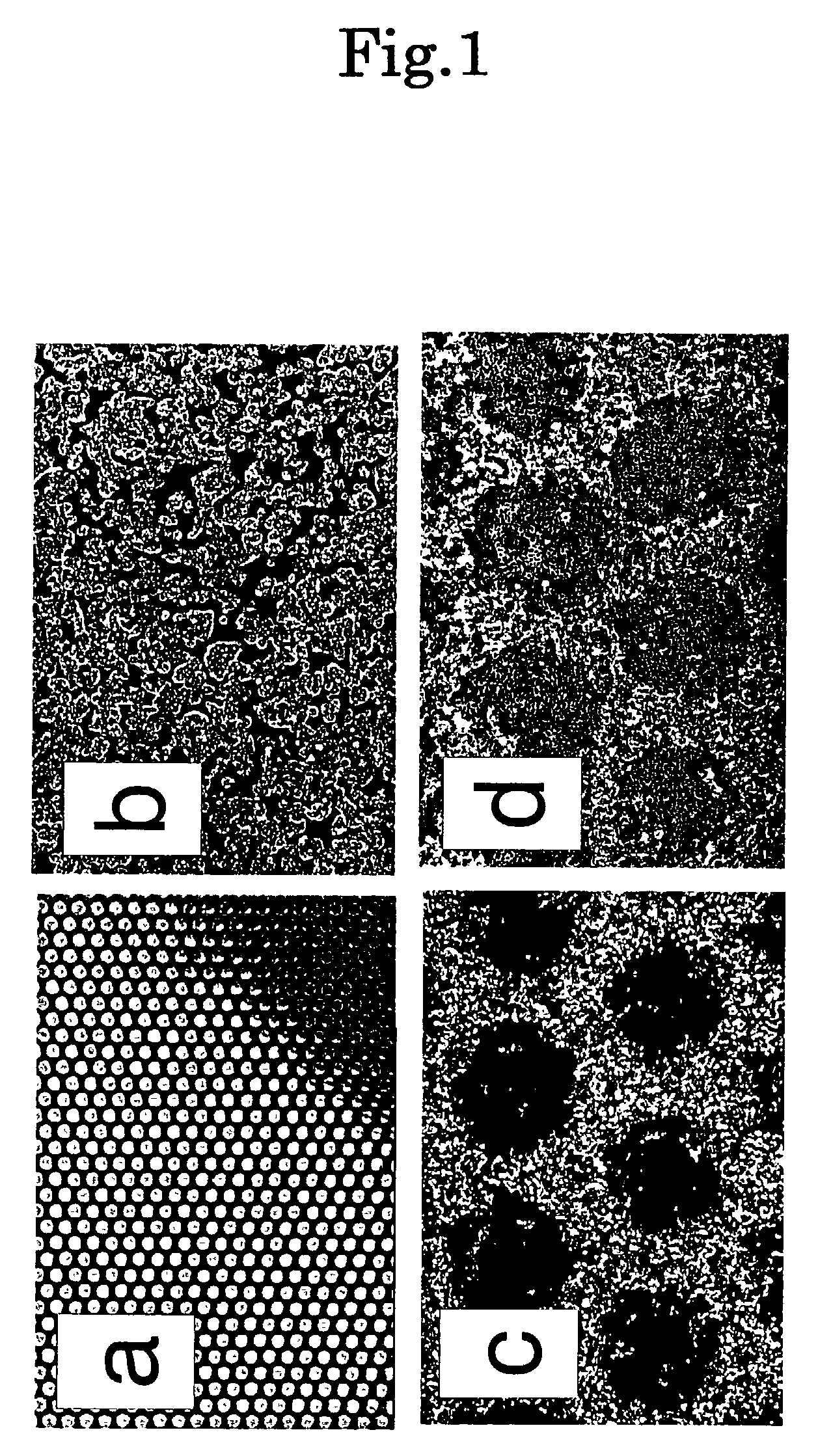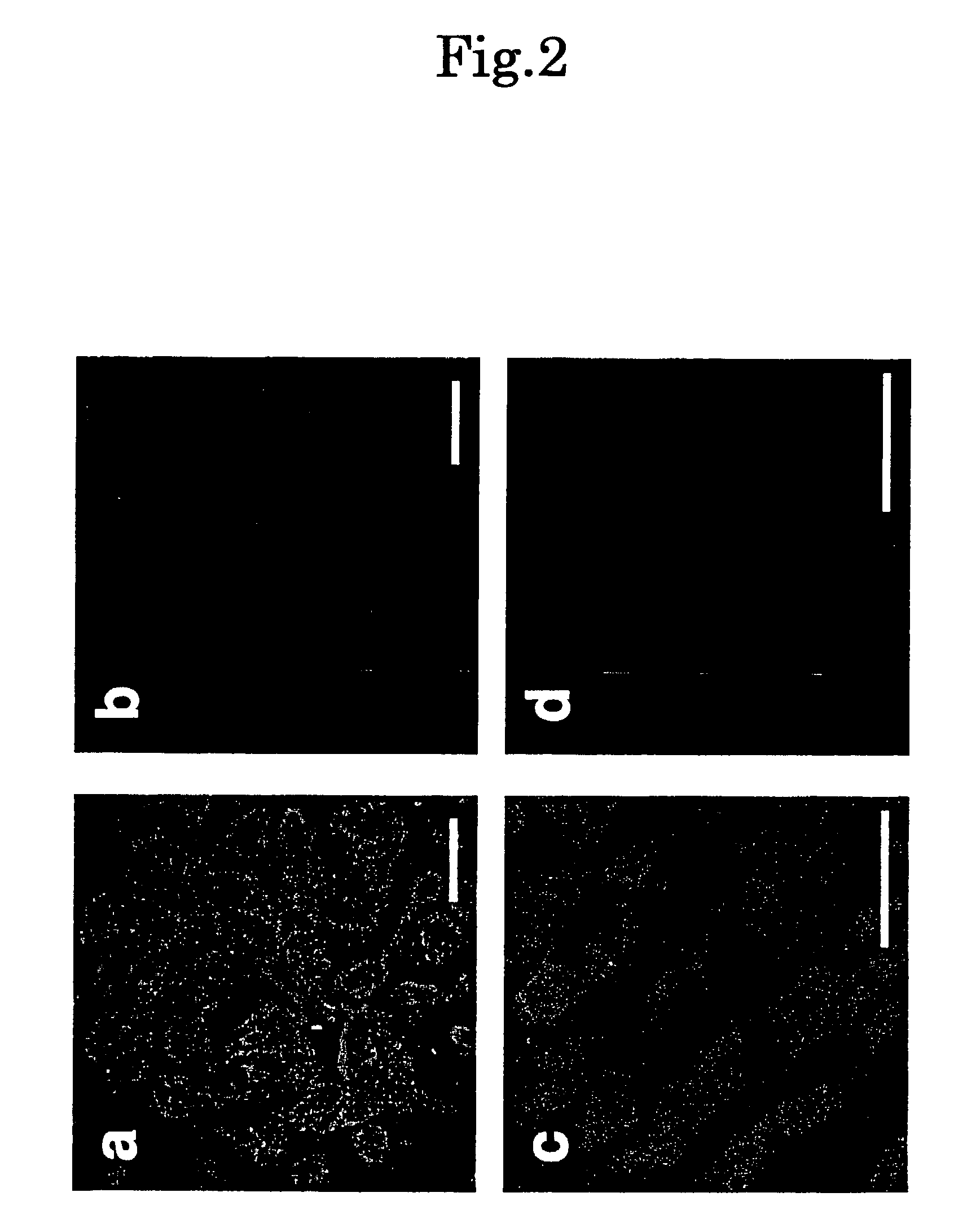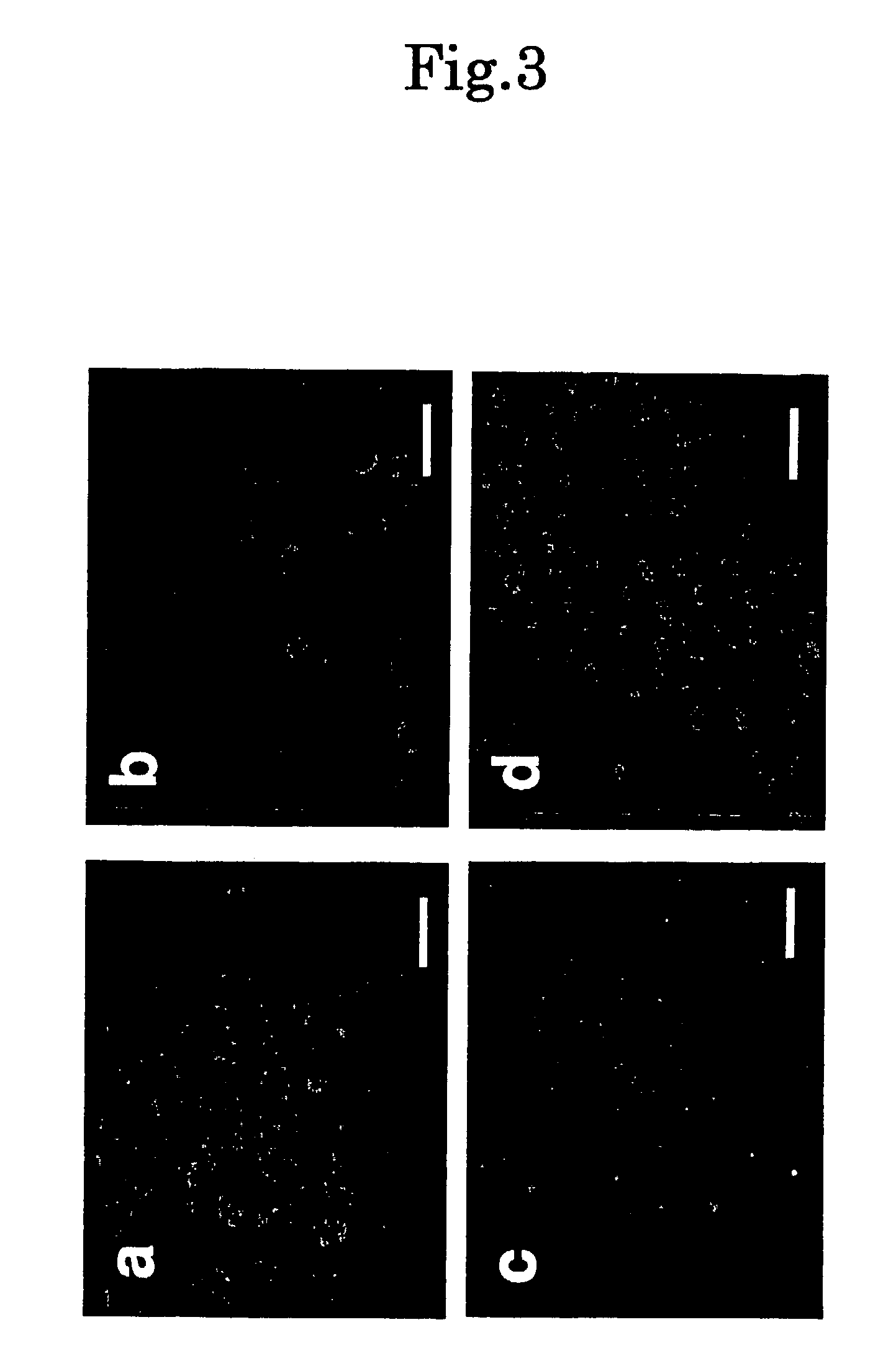Bed material for cell culture, method for co-culture of cell and co-cultured cell sheet obtainable therefrom
a cell culture and cell sheet technology, applied in the field of cell culture bed material, can solve the problems of insufficient cope with various culture methods, substrates that cannot fully cope with a wide variety of culture methods, and it is difficult to allow a plurality of kinds of cells to proliferate, and achieve the effect of high adhesion
- Summary
- Abstract
- Description
- Claims
- Application Information
AI Technical Summary
Benefits of technology
Problems solved by technology
Method used
Image
Examples
examples
[0045]The present invention will now be explained in more detail by giving examples but the present invention is by no means limited thereby.
examples 1 and 2
[0046]On a commercially available polystyrene cell culture dish of FALCON 3002 PETRI DISH (a product of Becton Dickinson Labware Co., Ltd.)(diameter: 6 cm), 0.35 ml of a solution obtained by dissolving an N-isopropyl acrylamide monomer in isopropyl alcohol so as to come to a concentration of 40% was coated. A metallic mask (FIG. 1a) having pores with a diameter of 1 mm and a distance between the centers of two pores of 1.5 mm was placed on the coated surface and irradiated with an electron beam having an intensity of 0.25 MGy in the coated state to fix an N-isopropyl acrylamide polymer (PIPAAm) on the surface of the culture dish in the form of a domain (island portions, the portions under the mask coming to a sea portion which had not been irradiated with the electron beam and had not been coated with the above described monomer). After the irradiation, the culture dish was washed with ion-exchanged water to remove the residual monomer and the PIPAAm not bonded to the culture dish, ...
examples 3 and 4
[0048]Bed materials for cell culture were obtained in the same manner as in Example 1 except that a metallic mask having a diameter of 0.5 mm and a distance between the centers of two pores of 0.8 mm (Example 3) and a metallic mask having a diameter of 1.5 mm and a distance between the centers of two pores of 5 mm (Example 4) were used, respectively.
[0049]On the obtained the bed materials for cell culture, bovine aortic vascular endothelial cells were cultured in the same manner as in Examples 1 and 2. The results of the culture are shown in Table 1.
PUM
| Property | Measurement | Unit |
|---|---|---|
| temperature | aaaaa | aaaaa |
| pore diameter | aaaaa | aaaaa |
| pore diameter | aaaaa | aaaaa |
Abstract
Description
Claims
Application Information
 Login to View More
Login to View More - R&D
- Intellectual Property
- Life Sciences
- Materials
- Tech Scout
- Unparalleled Data Quality
- Higher Quality Content
- 60% Fewer Hallucinations
Browse by: Latest US Patents, China's latest patents, Technical Efficacy Thesaurus, Application Domain, Technology Topic, Popular Technical Reports.
© 2025 PatSnap. All rights reserved.Legal|Privacy policy|Modern Slavery Act Transparency Statement|Sitemap|About US| Contact US: help@patsnap.com



